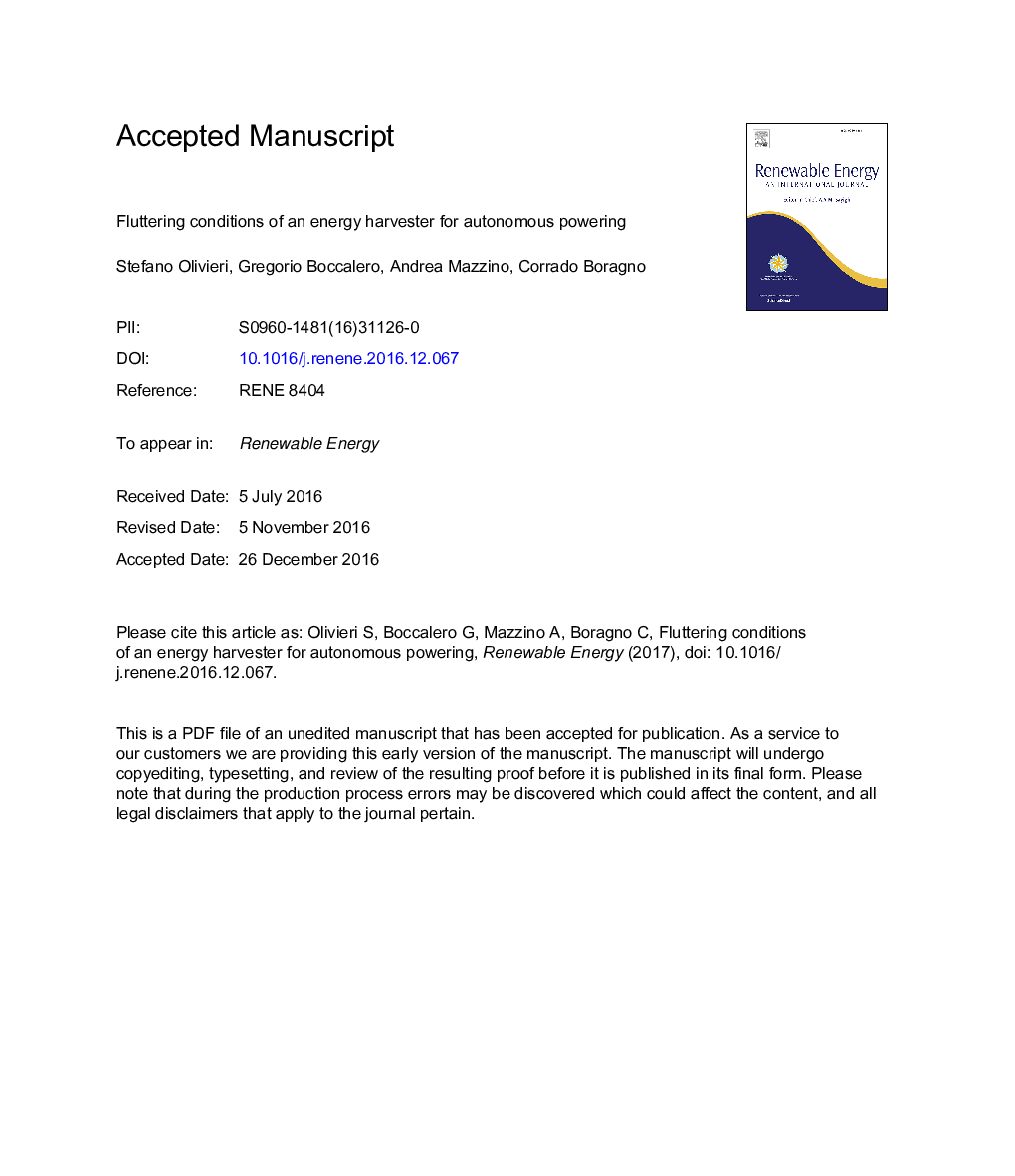| Article ID | Journal | Published Year | Pages | File Type |
|---|---|---|---|---|
| 4926458 | Renewable Energy | 2017 | 18 Pages |
Abstract
Flapping states of an energy harvesting device have been investigated by means of experiments, numerical simulations and a phenomenological model. The main aim is to predict the geometrical/physical properties of the system allowing sustained flapping limit cycles to emerge. These latter regimes are interesting when the system is used to harvest energy from flows. The main argument to identify flapping states is based on a simple resonance condition between the characteristic (elastic) time of the system and the flow time-scale. Similar arguments have been successful in other fields of fluid dynamics and fluid-structure interactions including turbulent flows of dilute polymer solutions and interactions between the wake originated by bluff bodies and elastic structures. The predictions of the geometrical/physical properties associated to critical conditions (i.e. those separating stable stages from flapping regimes) have been compared against the results of experiments, numerical simulations and a phenomenological model based on a set of ordinary differential equations. Results clearly confirm the expectations from the resonance condition. Discussions on how to extend our analysis in situations where the extraction stage is taken into account are also provided: this latter is indeed expected to influence the flapping stage and thus the critical conditions for flapping.
Related Topics
Physical Sciences and Engineering
Energy
Renewable Energy, Sustainability and the Environment
Authors
Stefano Olivieri, Gregorio Boccalero, Andrea Mazzino, Corrado Boragno,
